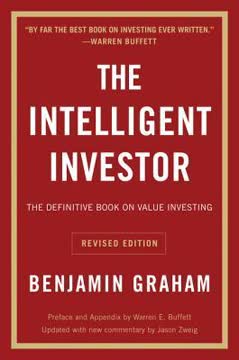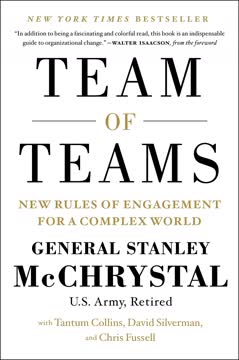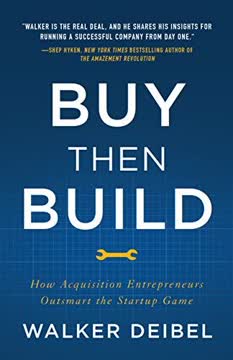가지 주요 요점
1. 재무 지능은 비즈니스 성공에 필수적인 학습 가능한 기술 세트입니다
우리가 사용하는 용어로서의 재무 지능은 타고난 능력이 아닙니다. 누구나 배울 수 있는 기술입니다.
기업가에게 필수적입니다. 재무 지능은 세 가지 주요 기술 세트를 포함합니다: 재무제표 이해, 재무의 예술(추정과 가정) 인식, 그리고 재무 데이터를 분석하여 정보에 입각한 결정을 내리는 것. 이러한 기술은 기업가가 비즈니스를 효과적으로 관리하고, 이해관계자와 소통하며, 전략적 선택을 하는 데 중요합니다.
비즈니스의 모든 측면에 영향을 미칩니다. 재무 지능은 다양한 비즈니스 기능에서 더 나은 의사 결정을 가능하게 합니다:
- 판매 및 마케팅: 제품 또는 고객별 수익성 이해
- 운영: 재무 지표를 통한 효율성과 생산성 평가
- 인적 자원: 보상을 재무 성과와 연결
- 전략: 다양한 성장 전략의 재무적 함의 평가
재무 지능을 개발함으로써, 기업가는 경쟁 우위를 확보하고, 회사의 성과를 향상시키며, 장기적인 성공 가능성을 높일 수 있습니다.
2. 재무의 예술을 이해하면 숫자 뒤의 추정을 알 수 있습니다
회계와 재무는 현실이 아닙니다. 그것들은 현실의 반영이며, 그 반영의 정확성은 회계사, 재무 전문가들이 합리적인 가정을 하고 합리적인 추정을 계산하는 능력에 달려 있습니다.
숫자는 절대적이지 않습니다. 재무제표에는 수많은 추정과 가정이 포함됩니다, 예를 들어:
- 수익 인식 시점
- 감가상각 방법 및 자산 수명 추정
- 재고 평가 기법
- 대손충당금
의사 결정에 대한 함의. 재무의 예술을 인식함으로써 기업가는:
- 재무 보고서에 대해 더 나은 질문을 할 수 있습니다
- 숫자에 내재된 잠재적 편향을 이해할 수 있습니다
- 재무 데이터를 세밀하게 해석하여 더 정보에 입각한 결정을 내릴 수 있습니다
- 재무 조작이 발생할 수 있는 영역을 식별할 수 있습니다
재무의 예술적 측면을 이해함으로써, 사업주는 재무 분석과 관리에 대해 더 비판적이고 통찰력 있는 접근 방식을 개발할 수 있습니다.
3. 이익은 추정치이고, 현금은 비즈니스 건강의 현실 점검입니다
현금은 비즈니스 성과에 대한 현실 점검이며, 현금 흐름표는 그 현실을 드러냅니다.
이익 vs. 현금 흐름. 이익은 중요하지만, 이는 실제 현금 상태를 반영하지 않을 수 있는 회계 원칙에 기반합니다. 주요 차이점은 다음과 같습니다:
- 수익 인식 vs. 현금 수집
- 비용 발생 vs. 현금 지불
- 감가상각과 같은 비현금 비용
현금 흐름 관리. 기업가는 비즈니스 생존과 성장을 위해 현금 흐름에 집중해야 합니다:
- 운영 현금 흐름을 모니터링하여 핵심 비즈니스 건강 상태 평가
- 현금 전환 주기 이해
- 운전자본을 효과적으로 관리
- 투자 및 자금 조달에 대한 정보에 입각한 결정 내리기
이익과 함께 현금 흐름을 우선시함으로써, 사업주는 서류상으로는 이익이 나지만 실제로는 현금이 부족한 상황을 피할 수 있습니다.
4. 대차대조표는 회사의 재무 상태를 종합적으로 보여줍니다
이 부분의 시작에서 언급했듯이, 현명한 투자자는 일반적으로 회사의 대차대조표를 먼저 꼼꼼히 살펴봅니다.
주요 구성 요소. 대차대조표는 세 가지 주요 요소로 구성됩니다:
- 자산: 회사가 소유한 것 (예: 현금, 재고, 장비)
- 부채: 회사가 빚진 것 (예: 대출, 미지급금)
- 자본: 주주에게 속하는 잔여 가치
분석력. 대차대조표는 다음에 대한 통찰력을 제공합니다:
- 유동성: 단기 채무를 이행할 능력
- 지급 능력: 장기 재무 안정성
- 효율성: 자산이 얼마나 잘 활용되고 있는지
- 자본 구조: 부채와 자본의 혼합
대차대조표를 이해하고 분석함으로써, 기업가는 회사의 재무 건강 상태를 평가하고, 잠재적 문제를 식별하며, 자원 할당 및 자금 조달 전략에 대한 정보에 입각한 결정을 내릴 수 있습니다.
5. 비율은 회사의 재무 성과와 효율성에 대한 강력한 통찰력을 제공합니다
비율의 힘은 재무제표의 숫자만으로는 전체 이야기를 드러내지 않는다는 사실에 있습니다.
비율의 종류. 주요 재무 비율은 네 가지 범주로 나뉩니다:
- 수익성: 예: 총 이익률, 순이익률
- 유동성: 예: 현재 비율, 당좌 비율
- 효율성: 예: 재고 회전율, 매출 채권 회전일수
- 레버리지: 예: 부채 대 자본 비율
분석적 이점. 비율은 기업가가 다음을 할 수 있게 합니다:
- 시간 경과에 따른 성과 비교
- 업계 표준과 비교
- 추세 및 잠재적 문제 식별
- 목표 설정 및 진행 상황 모니터링
- 데이터 기반 의사 결정
정기적으로 관련 비율을 계산하고 분석함으로써, 사업주는 회사의 성과에 대한 더 깊은 통찰력을 얻고 재무 건강과 운영 효율성을 개선하기 위한 사전 조치를 취할 수 있습니다.
6. 투자 수익률(ROI) 계산은 현명한 자본 지출 결정을 안내합니다
우리는 자본 투자를 결정하기 전에 분석을 수행하고 그 결과를 고려할 것을 권장합니다. 이것이 바로 재무 지능의 실천입니다.
ROI 방법. 자본 투자를 평가하는 세 가지 일반적인 접근 방식:
- 회수 기간: 초기 투자를 회수하는 데 걸리는 시간
- 순 현재 가치(NPV): 현금 유입과 유출의 현재 가치 차이
- 내부 수익률(IRR): NPV를 0으로 만드는 할인율
의사 결정 과정. 자본 지출을 평가할 때:
- 초기 현금 지출 결정
- 미래 현금 흐름 예측
- 적절한 ROI 계산 방법 적용
- 정량적 분석과 함께 정성적 요소 고려
- 재무적 및 전략적 고려 사항을 바탕으로 정보에 입각한 결정 내리기
ROI 계산을 활용함으로써, 기업가는 장비, 확장 또는 새로운 벤처에 대한 투자를 보다 객관적이고 재무적으로 건전한 결정을 내릴 수 있습니다.
7. 운전자본 관리는 현금 흐름과 수익성을 개선하는 데 중요합니다
대차대조표의 현명한 관리는 마치 재무 마법과 같습니다. 매출을 늘리거나 비용을 줄이지 않고도 회사의 재무 성과를 개선할 수 있습니다.
운전자본 구성 요소. 집중해야 할 주요 영역:
- 매출 채권: 수금 프로세스 최적화
- 재고: 효율적인 재고 관리 구현
- 매입 채무: 공급업체와 유리한 조건 협상
개선 전략. 기업가는 운전자본 관리를 개선함으로써:
- 매출 채권 회전일수(DSO) 단축
- 재고 회전율 증가
- 공급업체 관계를 해치지 않으면서 매입 채무 회전일수(DPO) 연장
- 적시 재고 시스템 구현
- 고객 및 공급업체와 더 나은 조건 협상
운전자본을 효과적으로 관리함으로써, 사업주는 현금을 확보하고, 자금 조달 비용을 줄이며, 매출을 늘리거나 비용을 줄이지 않고도 전반적인 수익성을 개선할 수 있습니다.
8. 재무 지능이 높은 회사 문화를 조성하면 더 나은 비즈니스 결과를 가져옵니다
우리는 또한 재무 지능 지수가 높을 때 비즈니스 성과가 더 좋아진다고 믿습니다. 이는 소유주뿐만 아니라 관리자와 직원 모두에게 해당됩니다.
재무 지식의 이점. 재무 지능이 높은 회사 문화는 다음을 가져옵니다:
- 모든 수준에서 더 나은 의사 결정
- 직원 참여 및 동기 부여 증가
- 운영 효율성 향상
- 개인 행동과 회사 목표 간의 더 큰 일치
- 변화하는 시장 상황에 대한 적응력 향상
구현 전략. 재무 지능이 높은 회사를 만들기 위해:
- 모든 직원에게 정기적인 재무 교육 제공
- 주요 재무 지표를 공유하고 그 중요성 설명
- 재무 문제에 대한 개방적 소통 장려
- 개인 및 팀 성과를 재무 결과와 연결
- 오픈 북 경영 관행 구현
조직 전체에 재무 지능을 함양함으로써, 기업가는 회사의 전반적인 성공과 장기적인 지속 가능성에 기여하는 더 참여적이고, 정보에 입각한, 효과적인 인력을 만들 수 있습니다.
마지막 업데이트 날짜:
FAQ
What's Financial Intelligence for Entrepreneurs about?
- Focus on Financial Understanding: The book emphasizes the importance of financial intelligence for entrepreneurs, helping them understand what the numbers really mean in their businesses.
- Key Financial Statements: It covers how to read and interpret the three major financial statements: the income statement, balance sheet, and cash flow statement.
- Practical Skills: The authors aim to equip readers with the skills to calculate critical ratios, understand cash flow, and analyze return on investment (ROI) to make informed business decisions.
Why should I read Financial Intelligence for Entrepreneurs?
- Essential for Entrepreneurs: This book is tailored specifically for entrepreneurs and business owners who may not have a financial background but need to understand financial concepts to run their businesses effectively.
- Real-World Applications: It provides practical examples and exercises that allow readers to apply financial concepts to their own businesses, enhancing their financial literacy.
- Avoid Common Pitfalls: By understanding financial statements and cash flow, entrepreneurs can avoid common pitfalls that lead to business failure, such as running out of cash despite being profitable.
What are the key takeaways of Financial Intelligence for Entrepreneurs?
- Profit vs. Cash: One of the main takeaways is that profit does not equal cash. Entrepreneurs must understand that a business can be profitable on paper but still run out of cash due to timing differences in revenue and expenses.
- Importance of Ratios: The book emphasizes the significance of financial ratios, such as profitability and liquidity ratios, which help assess a company's financial health and operational efficiency.
- Art of Finance: The authors highlight that finance is as much an art as it is a science, involving estimates and assumptions that can affect financial reports and decision-making.
What is financial intelligence, as defined in Financial Intelligence for Entrepreneurs?
- Skill Set: Financial intelligence is described as a set of skills that can be learned, enabling entrepreneurs to understand and interpret financial data effectively.
- Understanding Financial Reports: It involves the ability to read and analyze financial statements, recognize the implications of various financial metrics, and make informed decisions based on that analysis.
- Decision-Making Tool: Financial intelligence empowers entrepreneurs to assess their business's performance and make strategic decisions that drive growth and sustainability.
How does the income statement work in Financial Intelligence for Entrepreneurs?
- Revenue Recognition: The income statement records revenue when a product or service is delivered, not necessarily when cash is received, which can lead to discrepancies between profit and cash flow.
- Matching Principle: It follows the matching principle, which states that expenses should be matched with the revenues they help generate, affecting how profit is calculated.
- Profit Types: The book explains different forms of profit, including gross profit, operating profit, and net profit, each providing insights into various aspects of a company's financial performance.
What are the peculiarities of the balance sheet discussed in Financial Intelligence for Entrepreneurs?
- Snapshot of Financial Position: The balance sheet provides a snapshot of what a company owns (assets) and what it owes (liabilities) at a specific point in time, revealing the company's net worth or equity.
- Assets vs. Liabilities: It emphasizes the relationship between assets and liabilities, explaining how the balance sheet balances according to the fundamental accounting equation: Assets = Liabilities + Equity.
- Estimates and Assumptions: The authors point out that many figures on the balance sheet are based on estimates and assumptions, which can introduce bias and affect the interpretation of a company's financial health.
What is the significance of cash flow in Financial Intelligence for Entrepreneurs?
- Cash as a Reality Check: The book stresses that cash flow is crucial for business survival, as running out of cash is a common reason for business failure, even if the company is profitable.
- Types of Cash Flow: It categorizes cash flow into operating, investing, and financing activities, each providing insights into different aspects of a company's financial operations.
- Monitoring Cash Flow: Entrepreneurs are encouraged to monitor cash flow closely to ensure they can meet obligations and invest in growth opportunities, highlighting the importance of cash management.
How do ratios help in understanding financial health according to Financial Intelligence for Entrepreneurs?
- Quick Assessment: Ratios provide a quick way to assess a company's financial health, allowing entrepreneurs to compare their performance against industry benchmarks or historical data.
- Types of Ratios: The book discusses various types of ratios, including profitability ratios, liquidity ratios, and efficiency ratios, each serving a different purpose in financial analysis.
- Informed Decision-Making: By understanding and analyzing these ratios, entrepreneurs can make informed decisions about operations, investments, and financial strategies to improve their business performance.
What is the relationship between profit and cash flow as explained in Financial Intelligence for Entrepreneurs?
- Different Metrics: Profit is recorded on the income statement based on revenue recognition and expense matching, while cash flow reflects actual cash transactions, leading to potential discrepancies.
- Impact of Timing: The timing of cash inflows and outflows can create situations where a business is profitable but lacks sufficient cash to operate, emphasizing the need for careful cash management.
- Long-Term Viability: The book highlights that both profit and cash flow are essential for long-term business viability, and entrepreneurs must understand how to balance the two for sustainable growth.
What is the cash conversion cycle, and why is it important in Financial Intelligence for Entrepreneurs?
- Definition of Cash Conversion Cycle: The cash conversion cycle measures how effectively a company collects cash from its sales. It is calculated as DSO + DII - DPO, where DSO is days sales outstanding, DII is days in inventory, and DPO is days payable outstanding.
- Impact on Working Capital: A shorter cash conversion cycle indicates that a company can recover its cash more quickly, reducing the need for external financing. This efficiency can lead to improved cash flow and financial stability.
- Strategic Management Tool: Understanding the cash conversion cycle allows entrepreneurs to identify areas for improvement in their operations. By managing DSO, DII, and DPO effectively, businesses can enhance their overall cash position.
How can I improve my company’s cash flow according to Financial Intelligence for Entrepreneurs?
- Monitor Receivables: One effective strategy is to closely monitor accounts receivable and reduce days sales outstanding (DSO). This can be achieved by implementing stricter credit policies and following up on overdue invoices.
- Manage Inventory Efficiently: Reducing excess inventory can free up cash. Techniques like just-in-time inventory management can help minimize holding costs and improve cash flow.
- Negotiate Payment Terms: Entrepreneurs can negotiate better payment terms with suppliers to extend days payable outstanding (DPO). This allows the company to retain cash longer while still maintaining good vendor relationships.
What are the best quotes from Financial Intelligence for Entrepreneurs and what do they mean?
- "Cash flow is the lifeblood of any business.": This quote emphasizes the critical role of cash flow in sustaining operations and funding growth. Without adequate cash flow, even profitable businesses can face financial difficulties.
- "Understanding your financials is not just for accountants.": This statement highlights the importance of financial literacy for all entrepreneurs, not just those with a finance background. It encourages business owners to engage with their financial data actively.
- "Ratios are a window into a company’s financial statements.": This quote underscores the value of financial ratios in providing insights into a company's performance. Ratios help simplify complex financial data, making it easier to identify trends and make informed decisions.
리뷰
고교 시절 촉망받는 야구선수였던 저자는 연습 중 동료의 야구 배트에 얼굴을 정통으로 강타당하는 큰 사고를 당했다. 이 사고로 얼굴 뼈가 30조각이 났고, 왼쪽 눈이 튀어나와 실명 위기까지 왔으며, 심정지가 세 번이나 일어났다. 걸을 수조차 없었던 저자는 절망에 빠지는 대신 지금 당장 할 수 있는 아주 작은 일이라도 찾아 그것을 반복하자고 마음먹는다.
기업가를 위한 금융 지능은 금융 개념에 대한 접근성이 뛰어나다는 점에서 높은 평가를 받고 있다. 독자들은 재무제표, 비율, 그리고 기업 가치 평가 방법에 대한 명확한 설명을 높이 평가한다. 많은 사람들이 이 책을 기업가와 비재무 전문가들이 비즈니스 재정을 이해하는 데 필수적이라고 생각한다. 이 책은 실용적인 예시, 실제 응용 사례, 그리고 학습을 강화하는 연습 문제들로 칭찬받고 있다. 일부 경험 많은 독자들은 이 책이 너무 기초적이라고 느끼지만, 대부분의 리뷰어들은 금융 지능을 개발하고 정보에 입각한 비즈니스 결정을 내리는 데 필수적인 가이드로 간주한다.
Similar Books
















